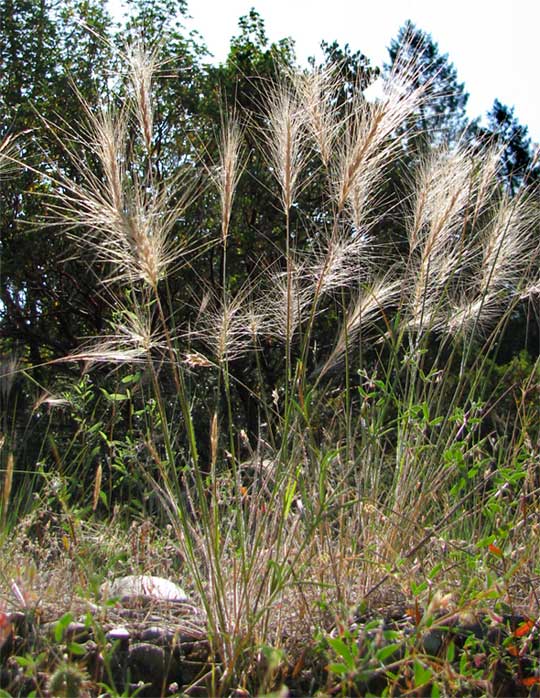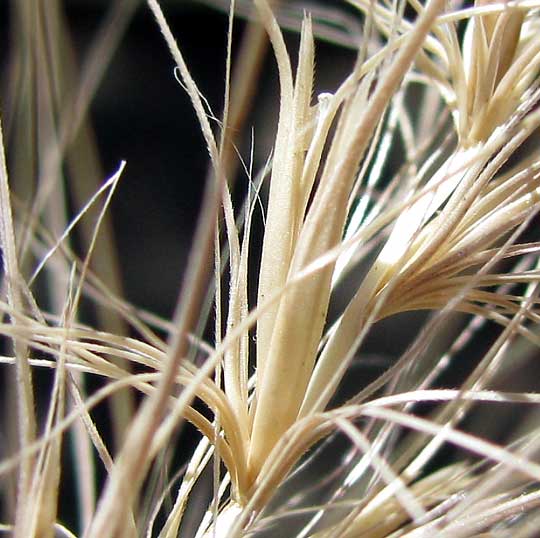Excerpts from Jim Conrad's
Naturalist Newsletter
from the July 19, 2009 Newsletter, issued from the Siskiyou Mountains west of Grants Pass, Oregon:
BIG SQUIRRELTAIL GRASS
As the hot dry season progresses here the landscape fades, meadows start looking scorched, and mountain slopes show their patches where each clearcut tract displays a different degree of brownness, depending on how recently it was cut. The more recent the cut, the more herbaceous layer there is to die back, and the browner that is. Grasses are conspicuous among the non-woody plants. One of the most showy grasses nowadays is shown below:

About 15 inches high, that's one of many grass species referred to as "wild rye," often more narrowly known as Big Squirreltail. It's ELYMUS MULTISETUS. For a couple of weeks the grass's flower heads have constituted narrow spikes but now as the stems and leaves die and dry out the flowers' long, needlelike "awns" spread out as you see. When the sun is low at dawn and dusk, sunlight very prettily catches in the heads' flaring awns.
While photographing the above plants I wondered how the long awns served the plant. Probably, even though they're not very stiff, they thwart herbivores, but another reason suggested itself when a vagrant breeze blew through: Part of a fruiting head broke off and was borne by the wind several feet away, thus disseminating the fruit into new territory.
Several grass species create similar wide-spreading fruiting heads. To be sure that what you're seeing is really Elymus multisetus, the floral anatomy must be checked. A close-up shows some of that below:

There you see that the "glumes" are divided to their bases into three to five needlelike "awns." Above the awns stand two "fertile florets," one on a "pedicel" above the other, plus there's at least one "sterile floret" at the side. The special terms are explained at http://www.backyardnature.net/fl_grass.htm.
Despite its stems dying back at this time, Big Squirreltail is a perennial. Several blackened, partly decayed stems from last year usually can be found radiating from the grasses' bases. Big Squirreltail is native to about the western third of the US, into Mexico's Baja California.